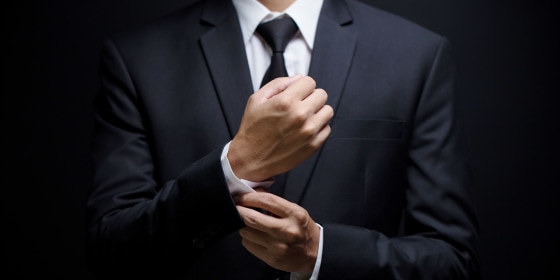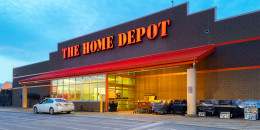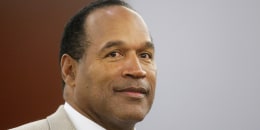Dear Mister Manners: I’ve been reading a lot about restaurants in some cities bringing back dress codes. I'm wondering: Doesn’t denying customers entry because of their wardrobe choices go against the core principles of hospitality and welcome?
(Mealtime with Mister Manners is a weekly column that delves into a smorgasbord of dining-etiquette dilemmas. Please submit your questions at the bottom of this page.)
In the mid-aughts, when everyone and their mom seemed to be inking deals to star in reality TV shows, the storied 21 Club in midtown Manhattan agreed to permit a new series, "I Want to Be a Hilton," to shoot its debut episode in one of the restaurant’s private dining rooms. As cameras rolled, two groups of contestants anxiously watched one of their own attempt to demonstrate etiquette mettle during a formal dinner overseen by host Kathy Hilton. Lending credibility and insight were several VIP guests, among them Ted Allen, then starring on the highly touted "Queer Eye for the Straight Guy."

Allen’s presence in the restaurant that evening was almost not to be. "Ted showed up at the door in this gorgeous blue-velvet Yves Saint Laurent tuxedo," recalls Diana Biederman, former public relations manager for 21. Unfortunately, the front-door greeter was having none of it. "Ted wasn’t wearing a tie," she explained, a cardinal violation of the eatery’s jacket-and-tie requirement for men. "It was Tom Ford for YSL, fresh off the runway, and meant to be worn without a tie," explained Biederman. She remembers dreading the idea that the restaurant’s gatekeeper might offer the TV star a plan B from the restaurant’s emergency necktie drawer.
Fashion sense prevailed when Biederman diplomatically persuaded the house to let Tieless Ted discreetly proceed to the second floor — safe from the glares of any neckwear-festooned patrons in the main dining room.
"I Want to Be a Hilton" lasted but a season; the 21 Club’s necktie edict vanished a few years after the Allen incident. The one-time speakeasy’s jacket requirement ultimately fell by the wayside too. And then, last year, the restaurant itself closed down, a casualty of the times.
The creep of athleisure
The world of workplace and restaurant wardrobes was already undergoing a sea change of casualness before the pandemic, reflecting the will of both corporations and restaurants to lure a demographic that would no sooner wear a tie to a business meeting than it would to a dinner date.
Though the final nail in the coffin of dress-code edicts once appeared immovable, there are small signs dress codes may be making a comeback — albeit as more of a whisper than a shout.
Three thousand miles from Manhattan, at her West Hollywood eateries Olivetta and Issima, Marissa Hermer and her husband, Matt, require guests make wardrobe choices that embody "casual elegance." What that decidedly does not include, per the restaurants’ websites, is "athletic wear, flip-flops or immodest garments."

What casual elegance actually entails is more or less up to the imagination of guests. Thus far, that has not been a problem, and in fact, it has engendered creativity. "I don’t want people to show up in a uniform," said Hermer. "That would be boring."
The policy at Olivetta and Issima is designed to be inclusive, not elitist. Indeed, even sneakers are OK — and not just the ones that cost $1,000 per foot. "We are very flexible with the dress code; it’s more about guests’ making an effort," Hermer explained.
And make an effort they do. According to the proprietor, diners report excitement about having the opportunity to bring their sartorial A-game to a restaurant in famously casual Los Angeles: "I usually have to save this dress for when I’m in New York or San Francisco or London," they’ve revealed to Hermer, herself a one-time cast member of the Bravo show "Ladies of London" (2014–2017).
Respect, fun and nostalgia
"When we dress up, we all look good, we feel good. It impacts how we think. It changes our thought patterns," said Leckie Roberts, a fashion insider and stylist whose near-quarter-million followers eagerly await her every elegant post, where she is seen about town in everything from Oscar De la Renta to J.McLaughlin.
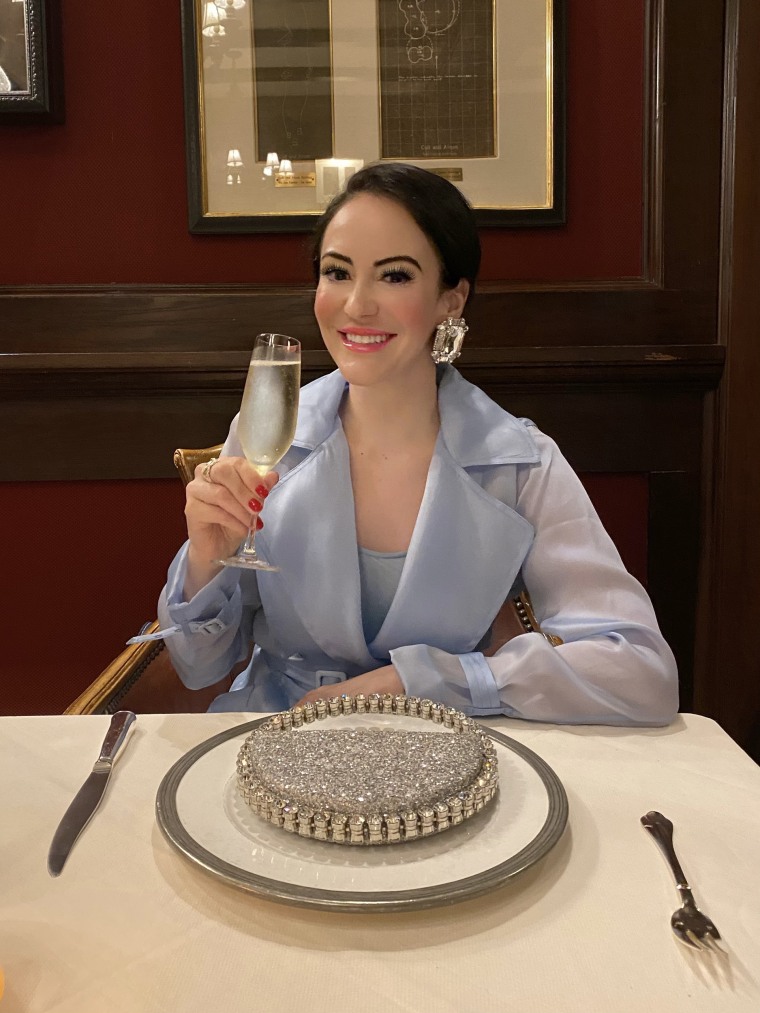
For this fashionista, dressing up — particularly after a two-year pandemic — is a joyous experience. And though she believes restaurant customers should not be bound by the strictures of a dress code, Roberts considers dressing for dinner a sign of respect, appreciation and support for restaurateurs — a thank-you of sorts for a cadre of workers who toughed out COVID-19 restrictions to keep us fed any way they knew how. For Roberts, there’s an added reason to dress to the nines: "It’s nostalgic, associated with a time when the world was less chaotic and stressful — and we weren’t stuck inside wearing Lululemon pants."
Formal service, casual servers
At El Parador Café, Manhattan’s longest continuously operated Mexican restaurant, customers aren’t the only ones slipping into something more comfortable. Those keeping the customers fed have also adapted to more casual times. Owner Jose Alejandro shared, "I wore a tuxedo to the restaurant until around 1995." For five years after that, it was a jacket and tie. Now it’s an open-collared shirt and blazer. His servers switch to T-shirts in summer, an acknowledgment of the heat on the restaurant’s patio, not to mention in the kitchen. For the balance of the year, the waitstaff goes back to more traditional bow ties and vests.
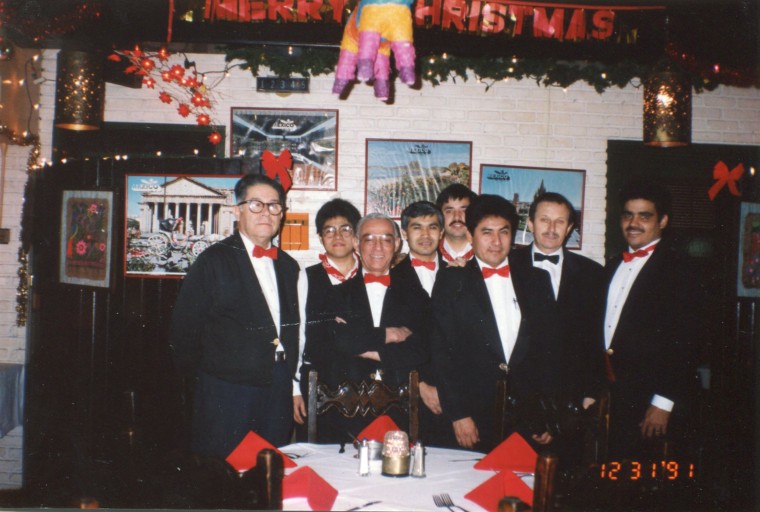
For customers, however, there is a sole sartorial line in the sand: tank tops for men. (Though a woman can wear one — a double standard that hasn’t gone unnoticed by the occasional patron.) Fortunately for alpha males seeking to display their deltoids while enjoying a quesadilla and a margarita, tank tops are acceptable for outdoor dining.
Stilettos + Savile Row = stars?
Could some of the backlash against dressing down and the gentle nudge toward dressing up have anything to do with establishments' desire to get favorable rankings from prestigious guides?
The perception that restaurants with dress codes get special attention from the folks who dole out stars is flat-out false, the Michelin Guide’s anonymous chief inspector for North America says. "The setting, ambience and service are all impactful aspects of the dining experience," the inspector explained. "However, restaurants earn Michelin stars solely for the food on the plate."
Dress codes and discrimination
For some, the nostalgia factor of dress codes is nonetheless tinged with the pain of exclusion, where patrons have been turned away from restaurants for wearing nearly identical ensembles as those who are already seated. In many such cases, the color of a patron’s skin has appeared to be the only distinguishing factor. In recent years, incidents in Baltimore, Detroit, Jersey City and Atlanta have demonstrated that inconsistently applied dress codes can be capricious at best, discriminatory at worst. Even elected officials are not immune from being singled out, as witnessed by former Atlanta mayor Keisha Lance Bottoms being denied a seat at the bar — let alone a table — for the transgression of wearing leggings to a Capital Grille this past spring.
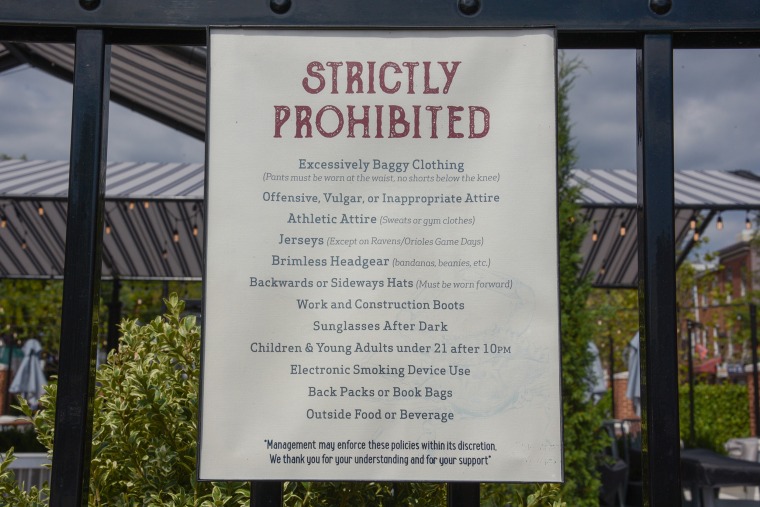
"Dress codes go wrong all the time," said professor Reuben A. Buford May, Ph.D., author of the 2014 book "Urban Nightlife: Entertaining Race, Class, and Culture in Public Space." More often than not, these micro-differentiations are not seen by the broader public for what they are. "People process them as an individual occurrence," he said, when in fact they may be part of a larger pattern.

To test this hypothesis, in 2018, May conducted an experiment in which three pairs of men — two white, two Black and two Latino — each attempted, minutes apart, to gain access to a nightclub. In all cases, one member of the pair wore attire that complied with the dress code while the other was togged in non-compliant clothing. Having repeated the experiment at 53 different establishments, May was unhappy to report that the Black men were turned away at a rate nearly twice that of the white and Latino men, despite the fact that their wardrobes were identical.
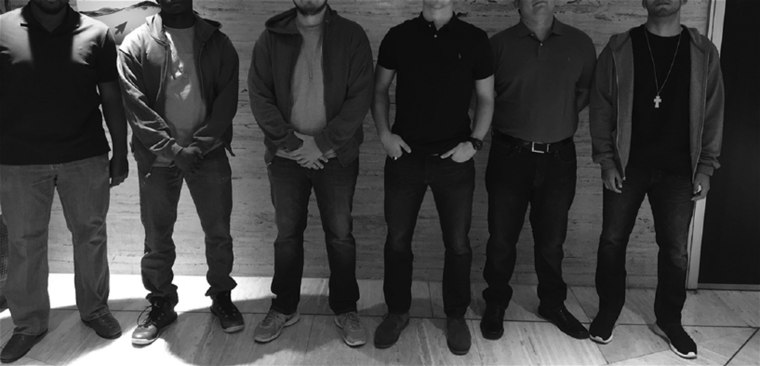
As alarming as those numbers are, and mindful of the progress that still must be made in this realm, May believes there is nothing intrinsically wrong with a restaurant having a dress code, making the point that "There are Black entrepreneurs who own restaurants and nightclubs that have dress codes."
A professor of sociology at the University of Illinois at Urbana-Champaign, May posits the true value a dress code can offer is that it sets an expectation for how patrons will conduct themselves once they are inside an establishment. The key is for the rules to be applied consistently, he says — and that’s not just across racial lines, but across stature lines, too. "If Reuben May is turned away for wearing gym shoes to a restaurant, is it OK that LeBron James or Michael Jordan are allowed in just because they are who they are?"
Most important requirements
With society continuing to embrace more casual wardrobes — hand-in-hand with an enhanced appreciation for diversity and inclusion — I also believe there remains a place for dress codes. And not just those that are free of racially coded language (e.g. "No ghetto gear"), but that also permit gender expression. Any club or restaurant that posits "No slacks for women," for example, is a relic of a bygone era.
Thoughtfully created, well-communicated and consistently applied, dress codes should not be about shunning a class of individuals or making anyone feel inferior. They must be about encouraging each and every one of us to be at our personal best when we enter a beautiful dining room.
If a chef has spent weeks perfecting a recipe, ensuring every dish put in front of us looks and tastes like a work of art, is it too much to ask of patrons to treat their wardrobes as more than an afterthought?
Saving the athleisure for walking the dog, hitting the local sports bar or hopping on a Zoom call, the possibilities for personal expression when we dine out remain vast and varied. As Roberts reminds us, "Think of Halloween. Isn’t everything just more fun in a costume?"
Submit your dining etiquette questions here:
